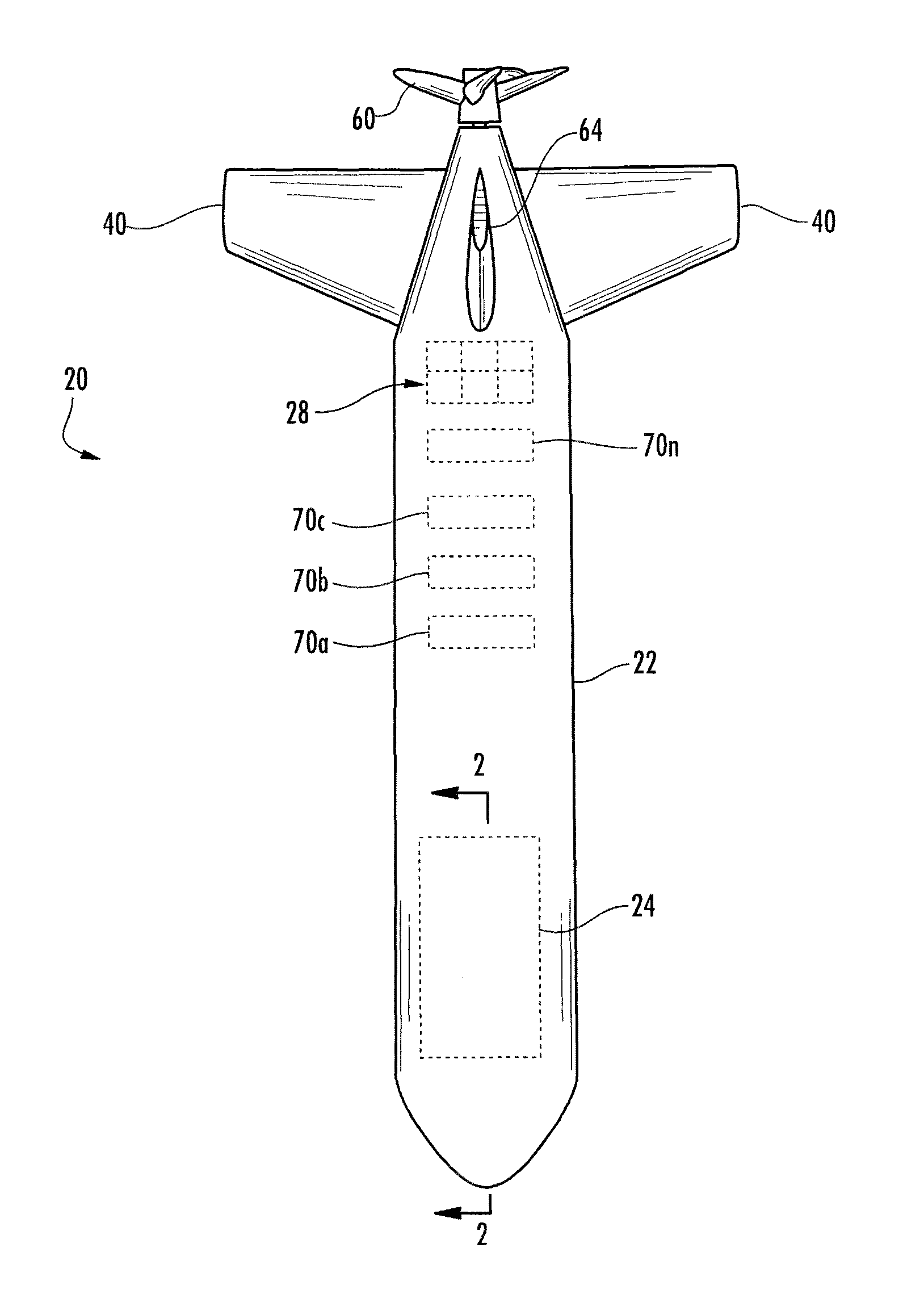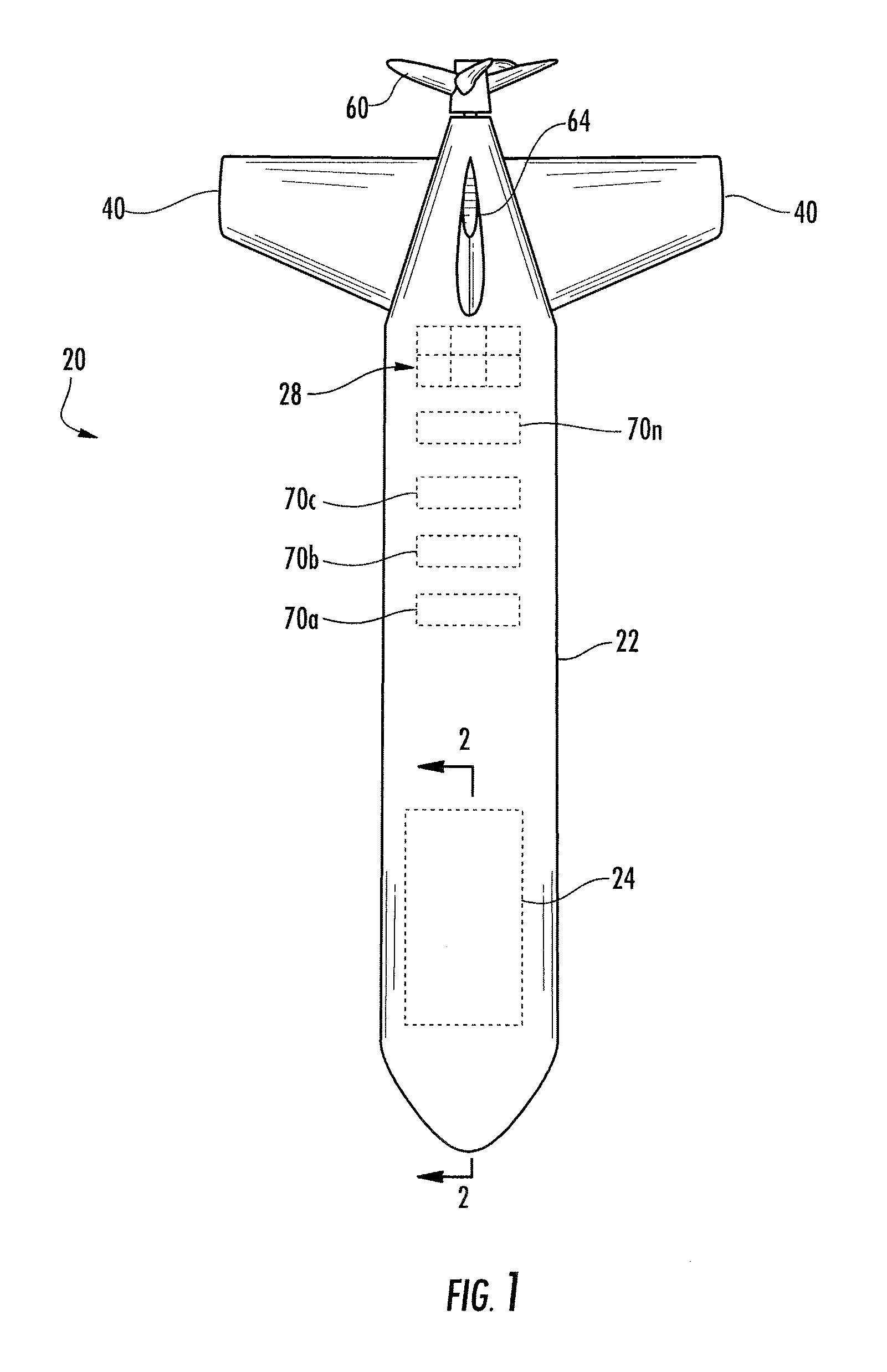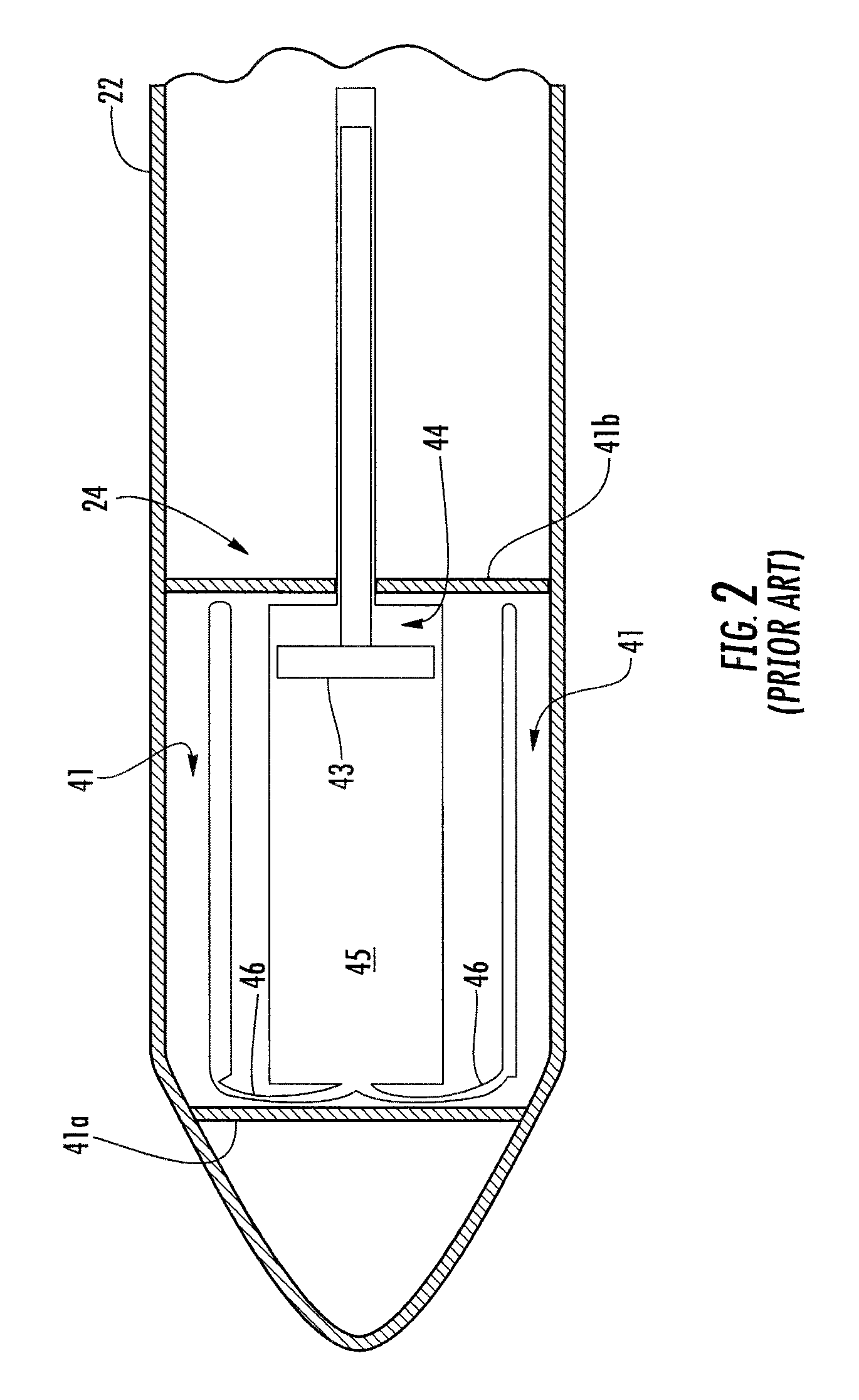Autonomous unmanned underwater vehicle with buoyancy engine
a technology of autonomous underwater vehicles and buoyancy engines, which is applied in the field of autonomous underwater vehicles, can solve the problems that the conventional underwater glider with a conventional buoyancy engine may be inadequate in some situations, and achieve the effect of improving the performance of the auv
- Summary
- Abstract
- Description
- Claims
- Application Information
AI Technical Summary
Benefits of technology
Problems solved by technology
Method used
Image
Examples
first embodiment
[0016]Initially, an autonomous unmanned underwater vehicle (“AUV”) 20 of the first embodiment is described. A general discussion of the components of the AUV 20 is followed by a general discussion of how the AUV 20 may operate, and thereafter there is a more specific discussion of the components of the AUV 20, followed by a more specific discussion of operation of the AUV 20.
[0017]FIG. 1 is a schematic top plan view of the AUV 20. In FIG. 1, some of the AUV's internal components, which are typically hidden from view, are shown in dashed lines. As shown in FIG. 1, the AUV has a body including a cylindrical hull 22 with a rounded front end and a tapered rear end. Any other suitably shaped body / hull may be used.
[0018]FIGS. 2 and 3 are schematic cross-sectional views of a forward portion of the AUV 20, with the cross-sections taken substantially along line 2-2 of FIG. 1. FIGS. 2 and 3 schematically show portions of one of the internal component of the AUV 20, namely a portion of a buoya...
second embodiment
[0019]The buoyancy engine 24 that is schematically, partially shown in FIGS. 2 and 3 is of a type that is typically located in, or proximate to, the nose (e.g., front end) of the AUV 20, and that causes a change in the center of gravity of the AUV while the buoyancy engine is operating. A variety of different buoyancy engines may be used at different locations within the AUV 20. For example, FIG. 13 illustrates another buoyancy engine that is discussed in greater detail below, in accordance with this disclosure. For example and as discussed in greater detail below, it is optional for the buoyancy engine of the AUV 20 to cause a change in the center of gravity of the AUV.
[0020]FIG. 4 is a schematic, perspective, partially cut-away view of a rear portion of the AUV 20. FIG. 4 schematically shows additional internal components of the AUV 20, namely internal components of a rotary propulsion system 26 and a steering system 27 that has fins 40, 64 or other suitable control surfaces. In a...
PUM
 Login to View More
Login to View More Abstract
Description
Claims
Application Information
 Login to View More
Login to View More - R&D
- Intellectual Property
- Life Sciences
- Materials
- Tech Scout
- Unparalleled Data Quality
- Higher Quality Content
- 60% Fewer Hallucinations
Browse by: Latest US Patents, China's latest patents, Technical Efficacy Thesaurus, Application Domain, Technology Topic, Popular Technical Reports.
© 2025 PatSnap. All rights reserved.Legal|Privacy policy|Modern Slavery Act Transparency Statement|Sitemap|About US| Contact US: help@patsnap.com



